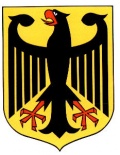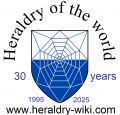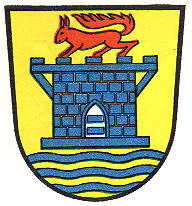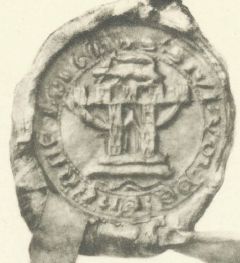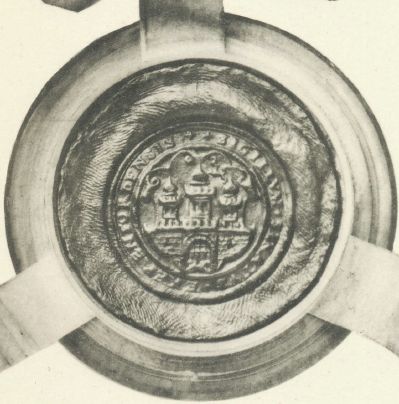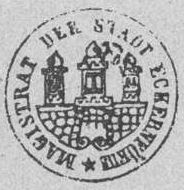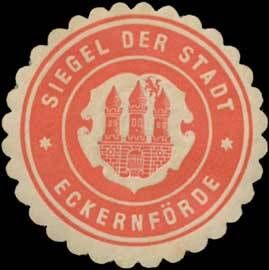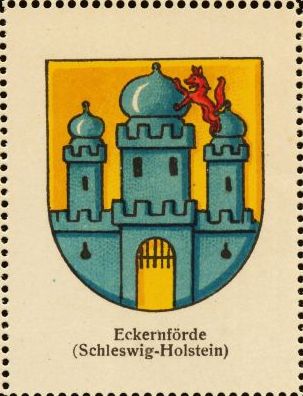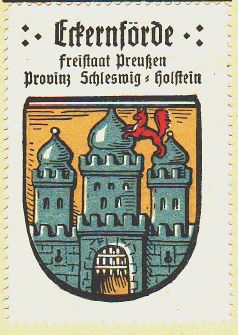Eckernförde: Difference between revisions
Knorrepoes (talk | contribs) m (Text replacement - "{{de1}}↵" to "") |
Knorrepoes (talk | contribs) m (Text replacement - "{{media}}" to " {{de1}} {{media1}}") |
||
| Line 39: | Line 39: | ||
{{ | |||
{{de1}} | |||
{{media1}} | |||
[[Civic Heraldry Literature - Germany|'''Literature''']]: Stadler, 1964-1971, 8 volumes; [[Kaffee Hag albums]], 1920s | [[Civic Heraldry Literature - Germany|'''Literature''']]: Stadler, 1964-1971, 8 volumes; [[Kaffee Hag albums]], 1920s | ||
Revision as of 11:31, 26 December 2022
This page is part of the German heraldry portal Deutsche Wappensammlung |
Heraldry of the World |
|
German heraldry:
|
Selected collector's items from Germany:
|
ECKERNFÖRDE
State : Schleswig-Holstein
District (Kreis) : Rendsburg-Eckernförde (until 1970 Eckernförde)
| German |
In Gold über drei blauen Wellenleisten ein breiter, gemauerter blauer Zinnenturm mit geschlossenem Tor, auf dessen Zinnen ein rotes Eichhörnchen läuft. |
| English | No blazon/translation known. Please click here to send your (heraldic !) blazon or translation |
Origin/meaning
The arms were granted in 1936.
Eckernförde received city rights in around 1288. The first seal dates from the early 14th century and shows the castle at the coast (waves). The squirrel is a canting symbol (Eichhorn, or Ekern in the local dialect, the name thus means acorn-ford), which first appears on the seal in the 15th century. At first the squirrel was shown somewhere on the seal, later it became part of the arms itself. It was said that the area was covered with a forest, so dense that a squirrel could travel to Kiel without touching the ground.
| Seal from 1441 |
Seal from 1624 |
| The municipal stamp shown in 1892 |
Seal from around 1900 |
| The arms in the Wappen-Sammlung (1900) |
The arms by Hupp in the Kaffee Hag albums +/- 1925 |
| The arms in the Abadie albums |
Literature: Stadler, 1964-1971, 8 volumes; Kaffee Hag albums, 1920s
